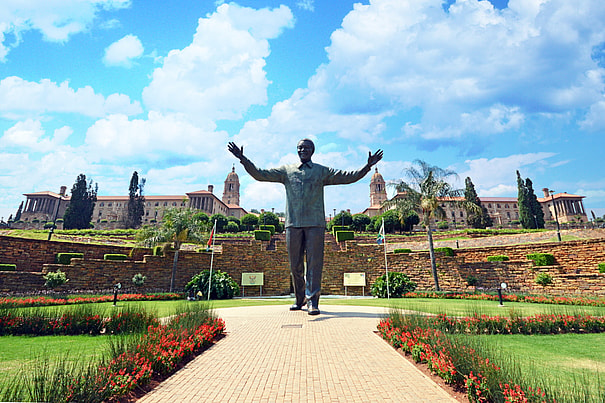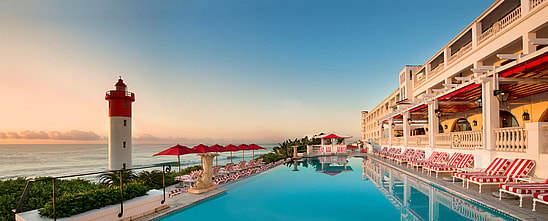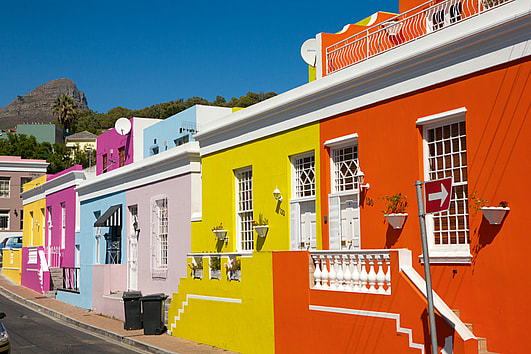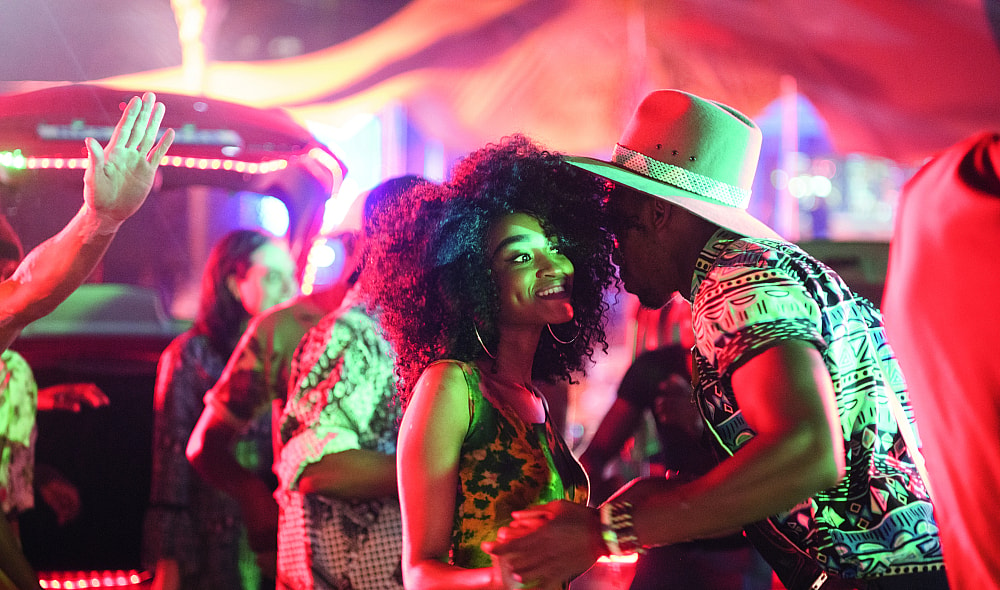Getting to South Africa had been on my bucket list for years. The travel envy would always kick in while scrolling through my Instagram feed and seeing people climbing to the top of Table Mountain, or getting low at AFROPUNK. I’d imagine landing in the country and being swept away on mythical safaris while singing Circle of Life (corny, I know), drinking world class wine as the sun set, and of course, exploring the fashion and food markets I had always heard so much about. When that dream finally became a reality this year, it was everything I had imagined, but not without a bit of complexity. After all, apartheid ended in South Africa less than 25 years ago and the memories evoke a number of emotions from both locals and visitors. But there is no better way to experience the nuances of a country forging ahead against a complicated past than by visiting, speaking to its people, and witnessing everyday life first-hand.
JOHANNESBURG
Begin in JoBurg, where a mashup of city life, trendsetters and one of the country’s most important townships, Soweto, will set the tone for your South African journey.
WHAT TO DO:
Eat at one of Johannesburg’s incredible food markets, where you can taste regional and international cuisine, dance to live music, and drink cocktails with the city’s cool kids. My personal favorites include Neighbourgoods every Saturday for its beautiful and locally crafted jewelry, and the Market on Main for a little salsa and wildly cheap cocktails on a rooftop with a chill vibe. Cheers!
Explore Maboneng, Jozi’s trendiest neighborhood, especially on a Sunday. Enjoy outdoor drinking with hookahs on Fox St., live music in the streets, and local favorites like the Ethiopian restaurant Little Addis.

For a fun night out for dinner, don’t miss The Big Mouth, where everything from grilled meats to incredibly fresh sushi are served in the energetic Mandela Square. If you do go, be sure to order the salmon ceviche and grilled halloumi, which I still dream about.
Take a tour of Soweto, the settlement Whites created during apartheid to separate Blacks from central society. Today, approximately 1.3 million people live here, creating everything from local cuisine inside of their homes for tourists to local produce for neighbors. Soweto is a must-visit for any tourist as it is the heartbeat of the civil rights movement against apartheid. There are incredible artists here creating a new voice and future for their communities.
Visit Constitutional Hill, the former prison turned museum where hundreds of political prisoners, including Mandela and Oliver Tambo, were held. There are moving testimonials from former inmates that will stay with you long after your visit. It is also home to South Africa’s Constitutional Court, and a must for any traveler seeking a better understanding of the country’s heartbreaking former prison system and new approaches to justice.

WHERE TO STAY:
The Michelangelo Hotel is centrally located in the upscale neighborhood of Sandton. The spacious lobby is the perfect place to have a drink or get work done. Don’t forget to take advantage of the sauna and sundeck when the jetlag begins to set in.
DURBAN
Next up, hop on a short, 1-hour flight to Durban, the third most populous city in South Africa, for your oceanside retreat. With its laid back, slower-paced vibe, Durban is a great option to take a little break from the frenetic city life of Johannesburg.
WHAT TO DO:
Eat bunny chow. When Indian immigrants were brought to South Africa by British colonists in the 1800s, many of them lived in Durban. Today, that Indian community and culture thrives. In fact, Durban is known in South Africa for its curry. Bunny chow is a half loaf of bread that has been hollowed out and filled with curry. You should not visit Durban without trying this famous local dish. Two popular places to try it include Gounden’s and Capsicum.
Enjoy a warm day on Durban’s coastline, called the Golden Mile. Grab a book or watch surfer’s in the distance make the most of the crashing waves. At uShaka Beach, sandcastle artists create incredible sculptures for tourists to enjoy.
Explore Florida Road at night. This epicenter of Durban includes a number of nightclubs, live music, boutiques and restaurants.
Enjoy al fresco dining with a Mediterranean flair at Niko’s. Here, you’ll feel like you’ve been whisked away to the Greek islands with its white and turquoise decor. Dishes not to be missed include the grilled cauliflower and chicken souvlaki plate. This is a great place to people watch and grab some sun.
Listen to jazz at The Chairman. This Black-owned club has incredible cocktails to match the artistry of the musicians who perform here.
WHERE TO STAY:
When it comes to hotels in Durban, there is only one place to stay: The Oyster Box Hotel on the Umhlanga’s beachfront. Apparently, John Legend and Chrissy Tiegen agree, since their photos are in the lobby. I’ve stayed at a number of incredible hotels over the years, but this one tops the list. The pool alone, with its red and white striped patterns, lighthouse, and sweeping views of the Indian ocean, make for a perfect relaxing afternoon. Each room here bursts with pastel colors and local art, and the daily afternoon tea is a delight. Even if you are not staying at The Oyster Box, do not miss their curry buffet for dinner. It is an unlimited experience you won’t soon forget.

CAPE TOWN
On your final South African stop, prepare yoursself for what is perhaps the most beautiful city in the world: Cape Town. Where else can you get world class beaches, hiking, wine country, African art, and…shall I go on?
WHAT TO DO:
Zeitz Museum has the largest collection of contemporary African art in the world. A 38 million dollar renovation and views of the harbor make this a must visit during your stay in Cape Town. Explore over 100 galleries of art from the diaspora.
Situated on the Atlantic shore, the Victoria & Alfred Waterfront offers a number of entertainment options, from food market, to restaurants and live music.
Nelson Mandela spent 18 of his 27 years in prison on Robben Island. Visitors can take a ferry to the island from Cape Town’s waterfront. It’s here that Mandela wrote his famous autobiography Long Walk To Freedom.
Get your camera ready for Bo-Kaap,the most colorful street in Cape Town. The brightly colored buildings here are a symbol of freedom, as its former slave community painted once white buildings after freedom.

WHERE TO STAY:
With views of the waterfront and yachts, Cape Grace is a perfect location to call home while in Cape Town. Some of the city’s best restaurants and art galleries are in walking distance, though you may find yourself not wanting to leave once you visit the rooftop pool and indulge in a few cocktails and tapas.
Get the App
This year marked the 100th birthday of Nelson “Madiba” Mandela, and perhaps no historical figure’s life can help visitors to better understand the country’s history in a contemporary context than his. The Mandela Journey App includes 100 historic landmarks across South Africa that influenced his life, and even allows users to customize their own itineraries, offering context, photos and curated audio narration.
Kristin Braswell is an award-winning travel journalist and founder of CrushGlobal Travel. Follow her adventures on Instagram, @crushglobal


